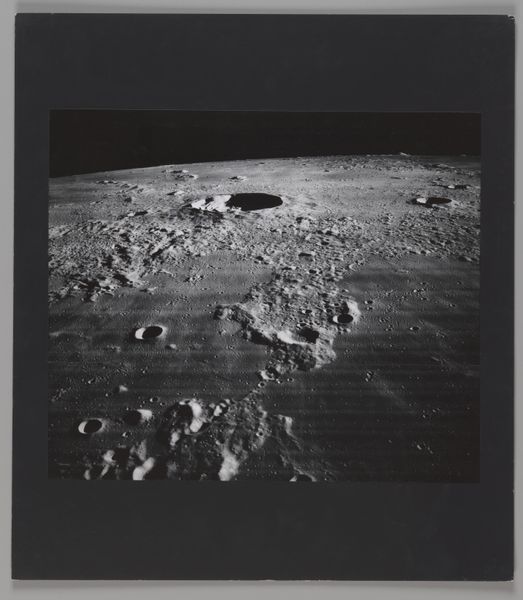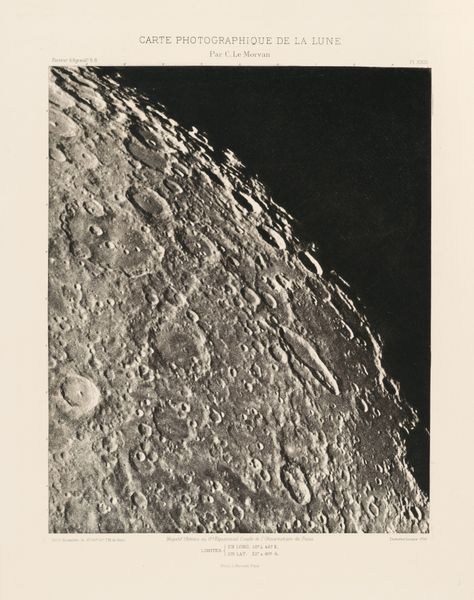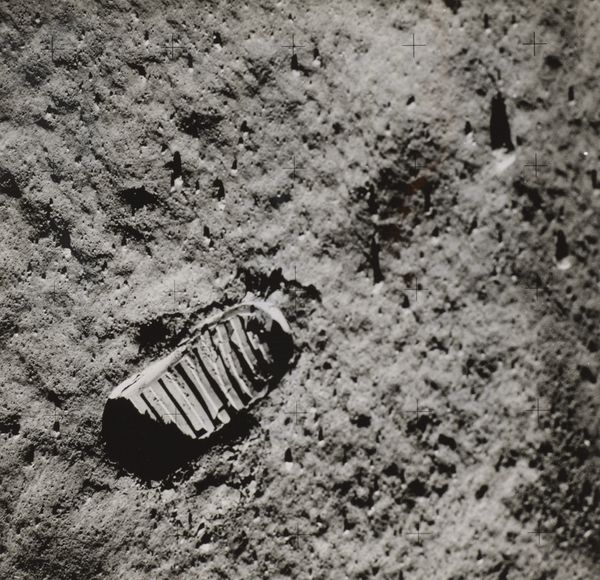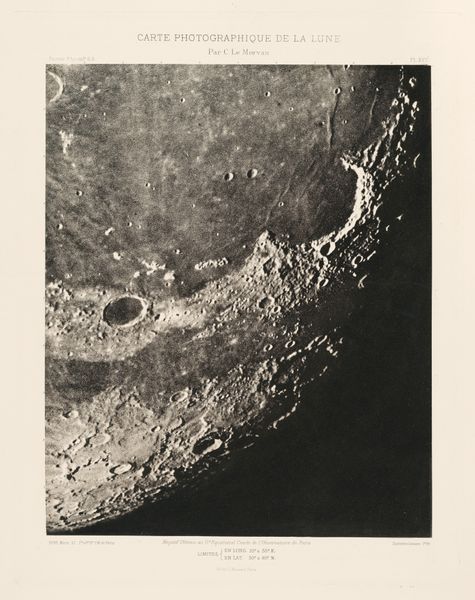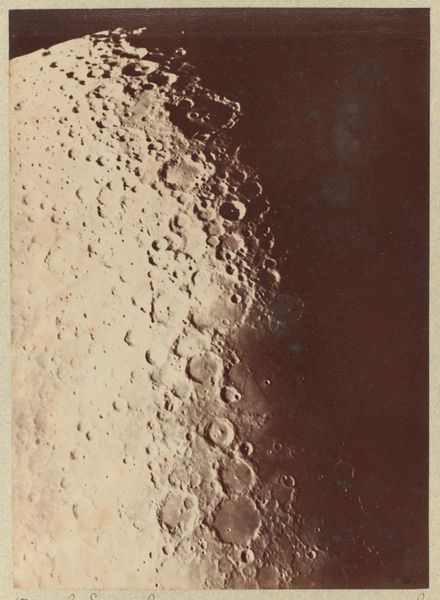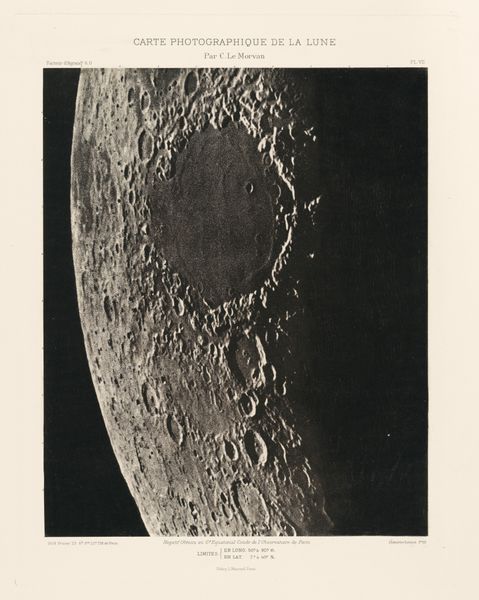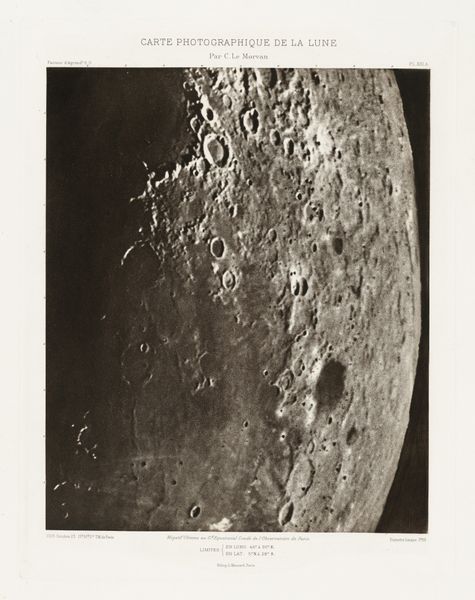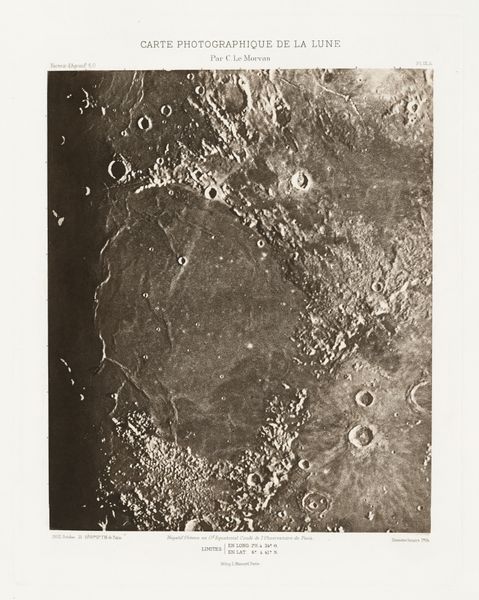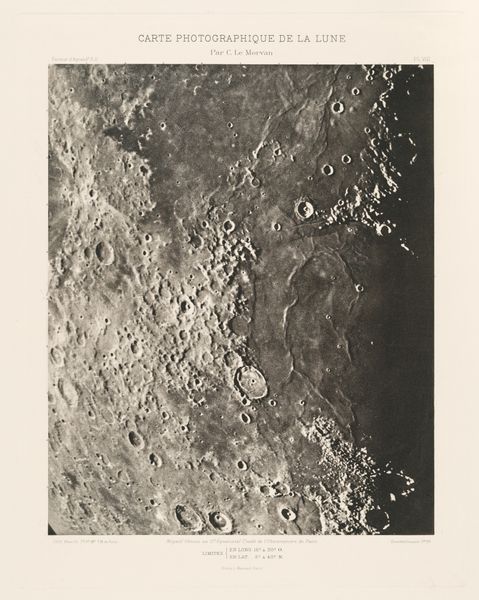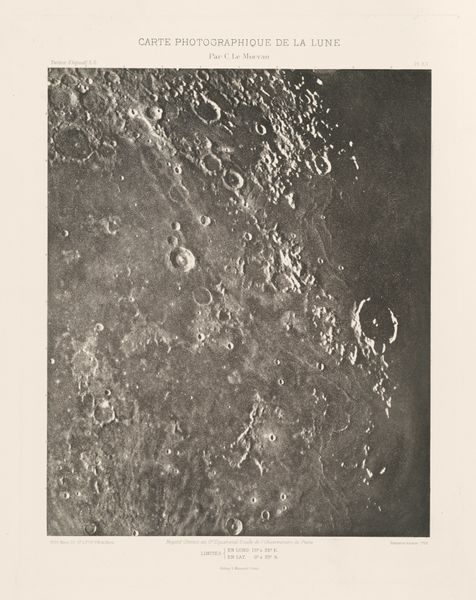
Far Side of the Moon at Apolune 1967
0:00
0:00
photography
#
landscape
#
photography
#
geometric
#
modernism
Dimensions: Image: 16 3/16 × 13 3/4 in. (41.1 × 34.9 cm) Mount: 18 in. × 15 1/2 in. (45.7 × 39.4 cm)
Copyright: Public Domain
Curator: Looking at this stark lunar landscape, the sheer emptiness really hits you. Editor: It's undeniably desolate, yes, but also visually captivating. The texture and interplay of light and shadow—almost sculptural. Curator: This is "Far Side of the Moon at Apolune," a photograph from 1967 by NASA. Its display here speaks volumes about the cultural significance we ascribe to space exploration. The museum is positioning scientific documentation as a form of high art. Editor: Absolutely. Think about the labor that went into even making this image possible. The precise engineering, the raw materials involved, the physical and mental endurance of those involved. Photography itself, let's not forget, is also a labor-intensive process, from the developing of the negative to the final print. It is no accident we only have a select range of moon rock samples on Earth, which in effect means NASA can curate its production pipeline here on earth too. Curator: It's interesting you mention "production." To the broader public in the 60's, it showcased American technological prowess, a political statement in the midst of the Cold War, pushing boundaries of human understanding, and demonstrating how it will colonize every corner in the future to secure global governance. Editor: Yet that pursuit of scientific knowledge relied on very earthly materials mined and manufactured into spacecraft and cameras. Let’s acknowledge the resource extraction inherent in this photo and that the 'landscape' that looks pristine actually contains a network of global capital that few reflect on. Curator: I see your point about those hidden connections. But ultimately, don't you think it's the photograph's stark beauty, the sheer otherworldly-ness that grips us, more so than thinking about labor and material supply chain, even today? Editor: Perhaps beauty acts as a clever distraction? We are so overwhelmed that our vision skips the material support for global visibility. It's worth pausing and reflecting that there is nothing particularly divine that allowed for this picture to exist. Curator: Fair enough. Thinking about its cultural resonance, this image is as much about Earth and human ambition as it is about the moon itself. Editor: A stark reminder that technological "triumphs" like this image always have roots—literal, material roots— back on our planet.
Comments
No comments
Be the first to comment and join the conversation on the ultimate creative platform.
